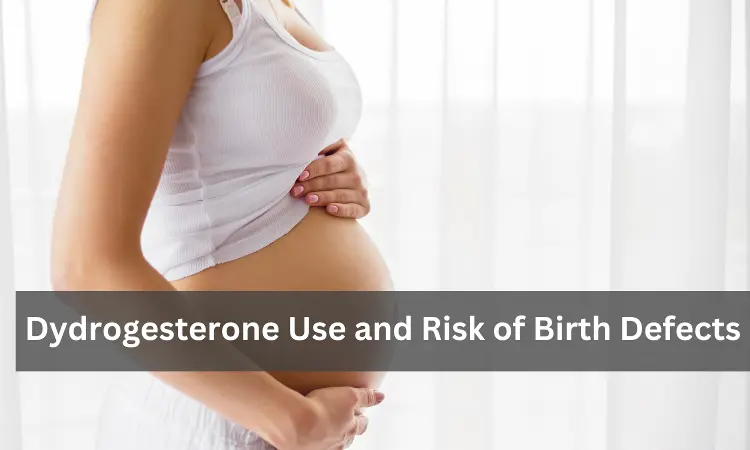- Home
- Medical news & Guidelines
- Anesthesiology
- Cardiology and CTVS
- Critical Care
- Dentistry
- Dermatology
- Diabetes and Endocrinology
- ENT
- Gastroenterology
- Medicine
- Nephrology
- Neurology
- Obstretics-Gynaecology
- Oncology
- Ophthalmology
- Orthopaedics
- Pediatrics-Neonatology
- Psychiatry
- Pulmonology
- Radiology
- Surgery
- Urology
- Laboratory Medicine
- Diet
- Nursing
- Paramedical
- Physiotherapy
- Health news
- Fact Check
- Bone Health Fact Check
- Brain Health Fact Check
- Cancer Related Fact Check
- Child Care Fact Check
- Dental and oral health fact check
- Diabetes and metabolic health fact check
- Diet and Nutrition Fact Check
- Eye and ENT Care Fact Check
- Fitness fact check
- Gut health fact check
- Heart health fact check
- Kidney health fact check
- Medical education fact check
- Men's health fact check
- Respiratory fact check
- Skin and hair care fact check
- Vaccine and Immunization fact check
- Women's health fact check
- AYUSH
- State News
- Andaman and Nicobar Islands
- Andhra Pradesh
- Arunachal Pradesh
- Assam
- Bihar
- Chandigarh
- Chattisgarh
- Dadra and Nagar Haveli
- Daman and Diu
- Delhi
- Goa
- Gujarat
- Haryana
- Himachal Pradesh
- Jammu & Kashmir
- Jharkhand
- Karnataka
- Kerala
- Ladakh
- Lakshadweep
- Madhya Pradesh
- Maharashtra
- Manipur
- Meghalaya
- Mizoram
- Nagaland
- Odisha
- Puducherry
- Punjab
- Rajasthan
- Sikkim
- Tamil Nadu
- Telangana
- Tripura
- Uttar Pradesh
- Uttrakhand
- West Bengal
- Medical Education
- Industry
Dydrogesterone exposure during early pregnancy associated with the reporting of birth defects, says Global PV Study

Dydrogesterone use during early pregnancy was associated with increased reporting of birth defects, including congenital heart defects and hypospadias, a global pharmacovigilance study that examined approximately 30 million birth records reported.
The study was published in ‘Human Reproduction-Oxford Academic’ Journal.
This pharmacovigilance study, designed as a case–non-case study, analyzed 29,120,563 individual case safety reports using the international pharmacovigilance database, VigiBase [the World Health Organization's (WHO's) global individual case safety report (ICSR) database]. The study cohort comprised spontaneous reports about pregnant women identified using ad hoc standardized questions (SMQ "Pregnancy and Neonatal topics"). Cases of birth defects were defined as reports that included a word linked to "congenital, familial, and genetic disorders", [System Organ Classes (SOCs) (excluding genetic, infectious, and metabolic abnormalities)]. Non-cases were any other adverse drug reaction reports. (1)
Initially, the study compared the reporting of birth defects with dydrogesterone to that of any other drug, then to any other drug used for ART (assisted reproductive technology). It also compared the reporting of birth defects for dydrogesterone with progesterone. The results were reported in a reporting odds ratio (ROR) format and its 95% confidence interval (95% CI). Two sensitivity analyses were run for each comparison. (1) The following results were noted:
- Out of all the safety data analyzed, 50,653 individual case safety reports were related to the use of drugs for ART. Of these, 375 were cases of birth defects, including 60 (16%) with dydrogesterone.
- Dydrogesterone cases were mostly reported in Europe (73%) by physicians (82%).
- Forty-four cases out of 60 (73.3%) were compatible with major birth defect (MBD) cases according to the EUROCAT(European Registration of Congenital Anomalies and Twins) classification. These cases contained a total of 55 MBD, consisting mainly of genital defects such as hypospadias (n = 18, 32.7%), congenital heart defects (n = 15, 27.3%), limb defects (n = 10, 18.2%) and digestive system defects (n = 6, 10.9%).
- Significant disproportionate reporting of birth defects was found with dydrogesterone when compared to any other drug (ROR-reporting odds ratio 5.4, 95%CI [3.9-7.6]) and to any other ART agent (ROR 5.9, 95%CI [4.2-8.4]).
- The head-to-head comparison of dydrogesterone to progesterone showed an increased rate of birth defects with dydrogesterone (ROR 5.4, 95% CI [3.7-7.9]).
The authors noted that further data are needed to confirm the safety signal.
Reference:
Dr Kamal Kant Kohli-MBBS, DTCD- a chest specialist with more than 30 years of practice and a flair for writing clinical articles, Dr Kamal Kant Kohli joined Medical Dialogues as a Chief Editor of Medical News. Besides writing articles, as an editor, he proofreads and verifies all the medical content published on Medical Dialogues including those coming from journals, studies,medical conferences,guidelines etc. Email: drkohli@medicaldialogues.in. Contact no. 011-43720751


